Valley Packing Company 1919-1955 — Cascade Meats Inc. 1955-1961
The Valley Packing Company and Cascade Meats Inc., located at 2805 Val Pak Drive in Salem was a locally owned and operated meat packing plant from its incorporation in 1919 until its takeover by a Portland-based company in 1961. It continued to operate until it finally closed in 1962. This page looks at some of the history of the company and its products.
Company History
100 Year old cement warehouse still stands as memento of local meat industry
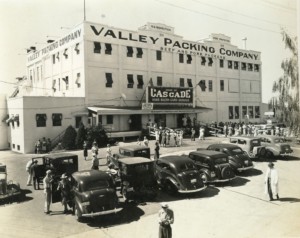
Exterior view taken about 2:30 p.m. Note “parking boys” with white caps and Ray Barton in right foreground. WHC Collections X 2011.006.0002.001
By Kylie Pine
Do you ever look up as you start driving under the railroad overpass on Portland Road and see the looming cement building just to the side? I do often and fondly; it reminds me of the holidays. This underpass and hulking building were important landmarks on my “road to Grandma’s house.” It was a key sight from the annual pilgrimage my family would take around Thanksgiving when we picked up my Great-Grandmother (who lived here in Salem) and drove her to her daughter’s house in Washington State where she would often stay through Christmas. The drive and seeing that building, in the jumble of my early memories, marked the start of the holiday season.
When cataloging materials a few years ago, I opened a scrapbook full of photog Save raphs taken in 1940 to document the Valley Packing Company’s 20th anniversary celebration and open house. I was shocked that I knew exactly where these had been taken. It was my landmark! The painted signage in this vintage photo placed it in a very different light. Since ‘tis the season for meat stories (and bad puns) I thought I might unpack a bit of this building’s story here. It is a meaty one.
Local Meat Men Join Forces
In 1919, the proprietors of two long-time Salem meat markets joined forces to create a meat packing plant.[1] Brothers Frederick W.[2] and William H. Steusloff[3] joined with Curtis Cross to incorporate the Valley Packing Company in February of that year, giving up their retail stores for a new wholesale operation.[4] With funding from local bankers like William Walton[5] and Asahel N. Bush[6] and a guarantee from the city of Salem to extend the sewer system to service the new facility[7], a 82 ½ x 82 ½ foot, four story, cement facility was completed in December of 1919.[8]
The company was set up principally to provide a local market for livestock raisers. Early hog raisers in the Mid-Willamette Valley were at the “mercy of outside buyers.”[9] Soon after the company started, and for many years after, local farmers were almost guaranteed their hogs would be bought by the Valley Packing company, whose production soon eclipsed all the swine that could be raised locally.[10] The company even supported brood shows to encourage more farmers to raise hogs in the area.[11]
Many things went on at Valley Packing Company, but it was primarily a meat packing plant. Live cows, sheep, and hogs were brought in for slaughter. Corrals, pens and feed sheds were set up at back of the facility to house the livestock until they were butchered. Initially, the facility had a capacity to process 150 head of hogs and 25 head of cattle per day.[12] Some of the meat was further processed, smoked or salted to make hams, bacon, sausages and other processed meats that were sold under the trade names “Cascade,” “Oregon,” and “Valpak.”[13] One particularly colorful product advertised in the most adorable ham-shaped booklet was “Tongue Salad – a tasty sandwich loaf made from tongue meat combined with red pimentos, sweet pickles and pieces of Tillamook Cheese.”[14] Meats were marketed throughout Oregon and Southern Washington.[15]
More than Just Meat
In addition to meat products, the Valley Packing Company also did trade in animal by-products. Fats were rendered and sold as lard.[16] “Valley Lawn food” an animal byproduct described as an “indispensable” fertilizer was also marketed.[17] The advertisement is not very specific about the content of this fertilizer, but a 1926 map of the facility shows a room identified as the “bone mill.”[18] Ground bone meal, along with blood meal and animal excrement all would have been available as byproducts at the facility and all have beneficial properties used in plant fertilizers today. The 1926 map of the facility also shows a “hide house”[19] suggesting animal skins were saved and if not processed on site, likely sold and processed elsewhere.
Efforts were made to make the facility as sanitary as possible. One 1920 chronicler noted that “The whole place is so systematically clean and sanitary that one might select the beef in the corral and follow it through the plant and to the block where the steak might be cut off and cooked before his very eyes, served and eaten without disturbing his appetite.”[20] Two government inspectors were assigned to the plant to assure quality and food safety throughout.[21] By the 1940s, it was one of only three meat plants in the state working under government supervision and able to label a certified product.[22]
More than just providing an outlet for farmers and local, fresh product for consumers, the Valley Packing Company was very involved in community events. It sponsored an annual 4-H pig feeding contest at the Oregon State Fair, which gave out cash prizes to 4-H participants with the best market hogs based on the grade of the hog and the rate and cost of grain used by the student in its raising.[23] The company provided free hotdogs for racers in Salem’s annual Soap Box Derby races.[24] They even awarded hams to every Salem Senator (local baseball team player) that hit a home run at Salem’s Waters Park.[25] The company worked to appeal to children, too. Like cereal boxes of yore, Valley Packing started including comic books in their packaged hotdogs. Kids could look between “the cardboard base and the cellophane wrapper” for over 15 different adventures of Jim Solar, Space Sheriff battling the likes of Spidermen of Venus or Pirates of Planet X. “Tell your friends to buy Cascade Wieners so you can trade comic books,” one 1955 advert suggested, “Remember only Cascade Wieners have comic books!”[26]
Cascade Meats and the end of Locally Packed Meat Products
Valley Packing Company changed its name in 1955 to Cascade Meats Inc. to more closely align with its most famous product brand.[27] Unfortunately for the local meat production industry, the writing was on the wall. In 1961, the company facilities were leased to a Portland firm.[28] By 1962 the company closed its doors.[29] Oregon Statesman editor and former Governor Charles A. Sprague succinctly summed up the myriad causes for the closure in a 1962 editorial: “Anyone who knows something of the vicissitudes of the meat-packing industry knows how precarious its operations have been for years. Among all manufacturing groups, meat packing stands at the bottom in profit margin.”[30] He cited everything from large national trends bringing cheaper meats to market out of the Midwest to the installation of I-5 resulting in more competition from bigger markets like Portland. The business model just wasn’t viable anymore. Sprague also interestingly notes that Salem was not alone. The largest meat producers in the country were also pursuing other lines – Amour & Company took up pharmaceuticals, Wilson’s sporting goods and Swift’s to everything from insurance to petroleum.[31]
The industry may be gone, but several reminders remain. The sturdy cement structure at 2805 ValPak Rd NE, named for Valley Packing Co. and the remarkable scrapbook documenting in the WHC’s collections documenting the nearly 10,000 people who toured during the open house are two.[32] So on this centennial of its construction, I turn to one impressed attendee of the open house, who wrote a letter to editor to loftily exclaim “If all plants were as careful of cleanliness and sanitation as the Valley Packing company, this would be a better world.”[33]
This article by Kylie Pine was originally published in the 1 Dec 2019 edition of the Statesman Journal. It is reproduced here with citations for reference purposes.
Sources
[1] “Packing House to be Erected.” Oregon Statesman 12 Jan 1919 pg 5
[2] Gravestone gives this spelling of his name. See image on Find-a-grave.
[3] Gravestone in Mountcrest Abbey and Mausoleum lists his name as this, article only lists W.H. See Find-a-grave.
[4] “Valley Packing Company is the name of new concern.” Oregon Statesman. 21 Feb 1919, pg 5.
[5] “A Visit to the Valley Packing Co.” Oregon Magazine. October 1920, pg 23
[6] “Packing House to be Erected.” Oregon Statesman 12 Jan 1919 page 5
[7] “Valley Packing Company is Name of New Concern.” Oregon Statesman 21 Feb 1919 pg 5. “Since the city has given the company the assurance of sewerage the officers have decided not to wait until next fall to start construction.” See also “Pipe Contract Let.” Oregon Statesman 26 Apr 1919 pg 3 which describes a contract for 2000 feet of concrete sewer pipe to connect city systems to new Valley Packing Company plant.
[8] “A Visit to the Plant of the Valley Packing Co.” Oregon Magazine October 1920, pg 23.
[9] “A Visit to the Plant of the Valley Packing Co.” Oregon Magazine October 1920 pg 23. “The Valley Packing Company is a Great Help to Our Live Stock Interests.” Oregon Statesman 26 Aug 1920 pg 3. “It stabilizes the market for our breeders and makes sure the highest price.”
[10] By 1955, it “has to buy heavily in hogs from the Mid-West because Oregon swine production does not meet the demand.” See “Valley Pak Changes Name.” Capital Journal 21 Mar 1955 pg 17. In “4-H members learn from Special Tours.” Corvallis Gazette Times 28 Mar 1955 pg 5. “He [R.C. Chambers] emphasized that about 80 percent of the pigs slaughtered is brought in from the Midwest and other areas.”
[11] “Annual Duroc Show Held at Salem; Low prices are received.” Oregon Daily Journal 5 Feb 1921 pg 8.
[12] “A Visit to the Plant of the Valley Packing Co.” Oregon Magazine October 1920, pg 23
[13] See “Valley Pack Changes Name” Capital Journal 21 Mar 1955 pg 17
[14] Advert in Scrapbook 1991.033.0001
[15] “Valley Pack Changes Name.” Capital Journal 21 Mar 1955 pg 17
[16] ”A Visit to the Plant of the Valley Packing Co.” Oregon Magazine October 1920 p 23.
[17] See advertisement in scrapbook 1991.033.0001.
[18] See Sanborn Fire Insurance Map for 1926.
[19] See Sanborn Fire Insurance Map for 1926
[20] “A Visit to the Plant of the Valley Packing Co.” Oregon Magazine October 1920, pg 23
[21] “A Visit to the Plant of the Valley Packing Co.” Oregon Magazine October 1920 pg 23
[22] “Valley Packing Company Celebrates 20th Year with Open House During Centennial.” Oregon Statesman 31 Jul 1940 pg 10.
[23] “Shirley Page of Salem Wins 4-H Foods Contest.” Oregon Statesman 7 Sept 1952 pg 19.
[24] “Public Gets Soap Box Derby Review via Station KOCO.”Oregon Statesman 28 June 1952 pg 5
[25] “Hams for Homers, Shutouts.” Capital Journal 23 Apr 1952 pg 16
[26] Advertisement. Capital Journal 2 Apr 1955.
[27] “Valley Pack Changes Name.” Capital Journal 21 Mar 1955 pg 17. “Adopts new name of Cascade Meats Inc.” Oregon Statesman 20 Mar 1955 pg 2.
[28] Madsen, Lillie L. “Veteran Meat Packing Firm Changes hands.” Oregon Statesman 6 Jul 1961
[29] Cook, William. “Gloom Grips Meat Plant as 72 Face Loss of Jobs.” Capital Journal 28 Feb 1962. Ganware, Robert E. “Cascade Meat Co to Close.” Oregon Statesman 24 Feb 1962.
[30] Sprague, Charles A. “It Seems to Me.” Oregon Statesman 27 Feb 1962 pg 1.
[31] Sprague, Charles A. “It Seems to Me.” Oregon Statesman 27 Feb 1962 pg 1. JBS USA. Wikipedia. https://en.wikipedia.org/wiki/JBS_USA
[32] “Packing Company Host to 10,000” Oregon Statesman; “Packing House Throws Open Doors.” Oregon Statesman 31 July 1940.
[33] Thompson, L.F. Letter to the Editor. Oregon Statesman 25 Aug 1940 pg 4.
20th Anniversary Open House, 1940
As part of the Salem’s Centennial Celebration in 1940, Valley Packing Company opened its doors to visitors. Nearly 10,000 people attended. The WHC is home to several scrapbooks and photographs documenting the event (Accession X2011.006). Some have been digitized here to give an idea of the sites and sounds of the event.



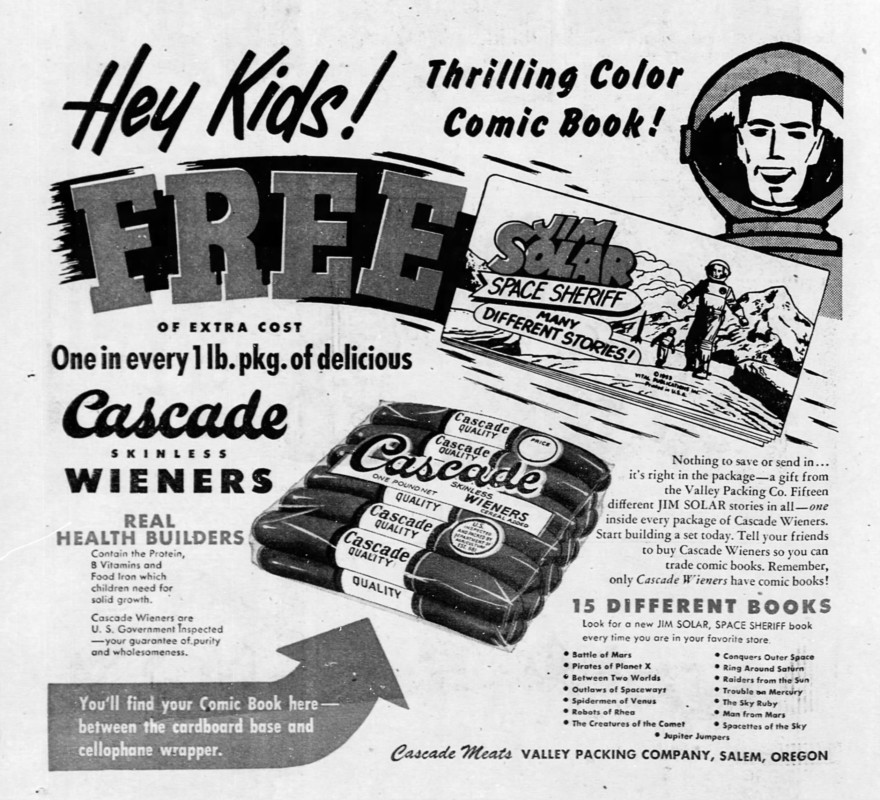
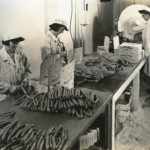
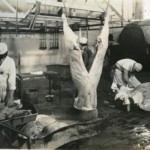
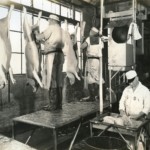
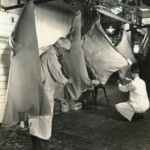
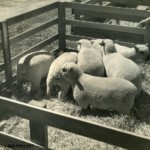
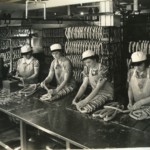
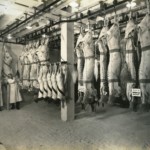
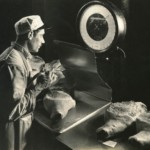
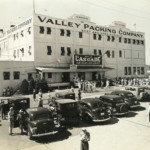
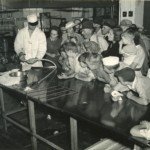
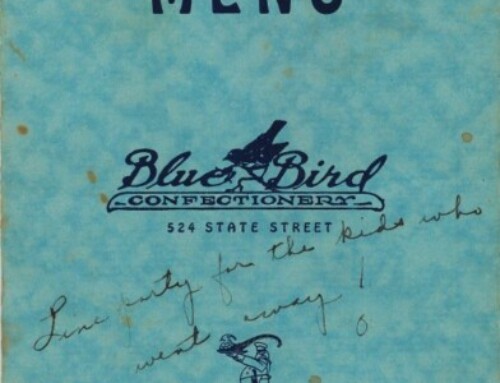
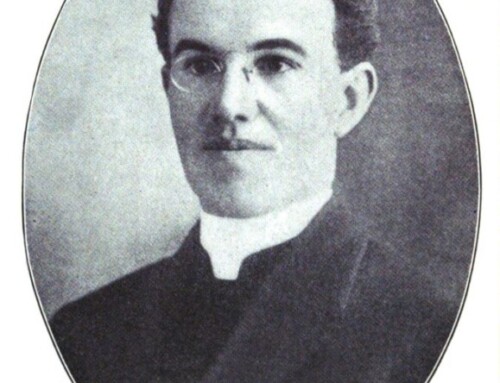
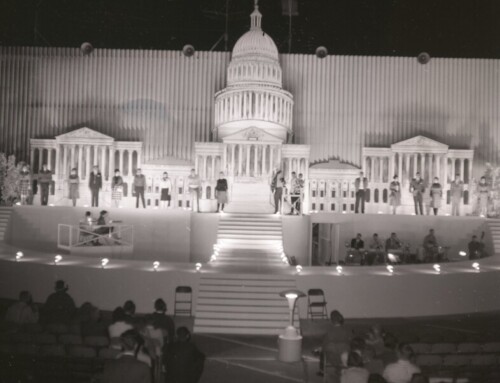
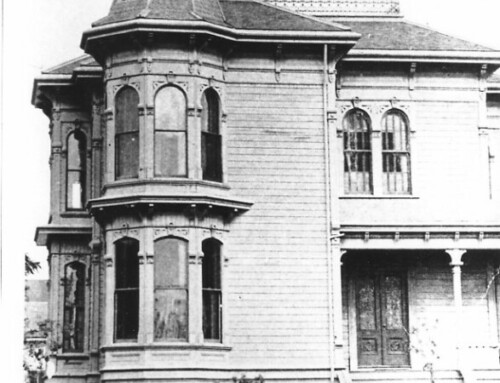
Leave A Comment